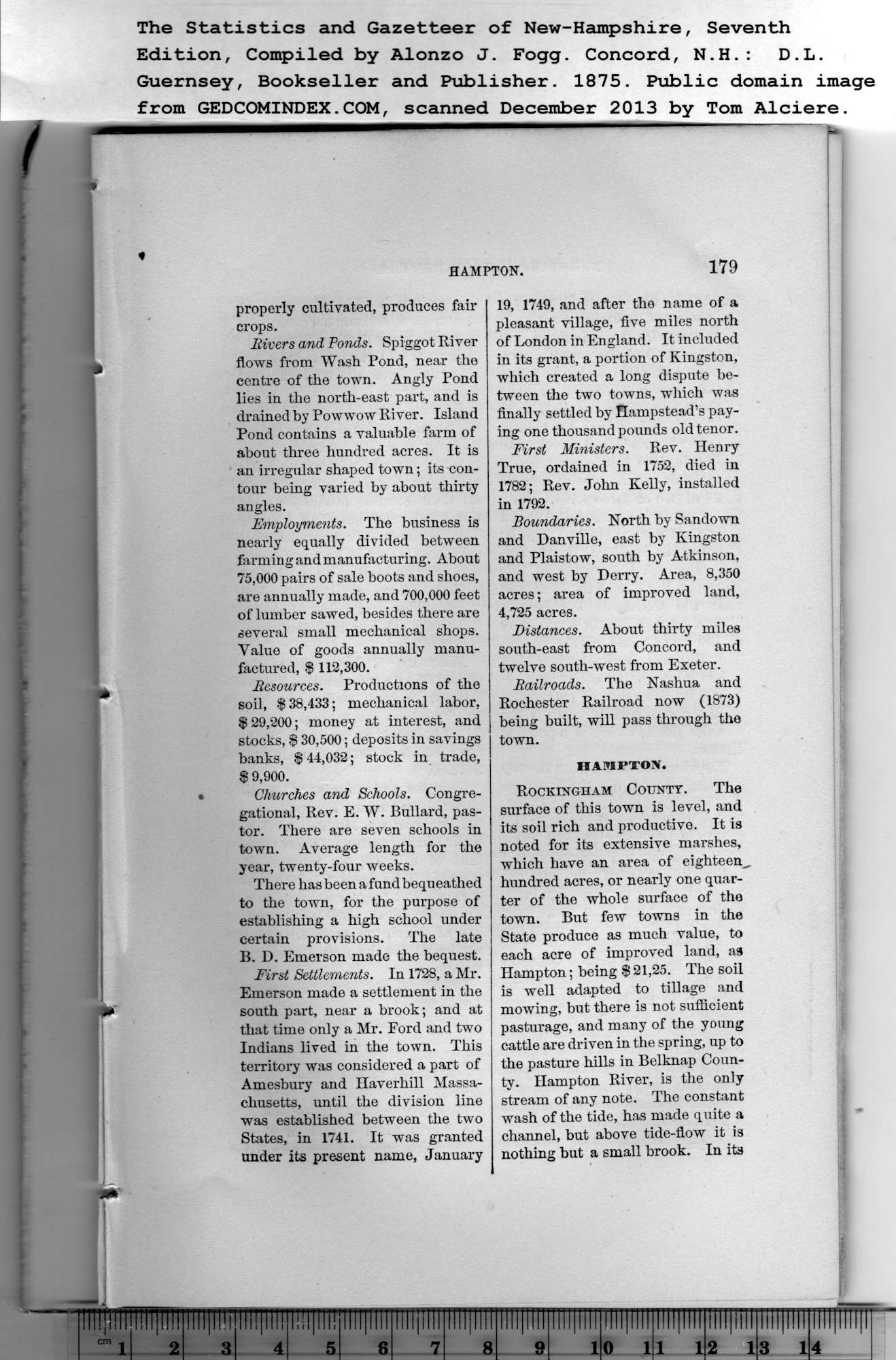|
properly cultivated, produces fair
crops.
Rivers and Ponds. Spiggot River
flows from Wash Pond, near the
centre of the town. Angly Pond
lies in the north-east part, and is
drained by Powwow River. Island
Pond contains a valuable farm of
about three hundred acres. It is
an irregular shaped town; its con-
tour being varied by about thirty
angles.
Employments. The business is
nearly equally divided between
farming and manufacturing. About
75,000 pairs of sale boots and shoes,
are annually made, and 700,000 feet
of lumber sawed, besides there are
several small mechanical shops.
Value of goods annually manu-
factured, $ 112,300.
Resources. Productions of the
soil, $38,433; mechanical labor,
$ 29,200; money at interest, and
stocks, $ 30,500; deposits in savings
banks, $44,032; stock in trade,
$ 9,900.
Churches and Schools. Congre-
gational, Rev. E. W. Bullard, pas-
tor. There are seven schools in
town. Average length for the
year, twenty-four weeks.
There has been a fund bequeathed
to the town, for the purpose of
establishing a high school under
certain provisions. The late
B. D. Emerson made the bequest.
First Settlements. In 1728, a Mr.
Emerson made a settlement in the
south part, near a brook; and at
that time only a Mr. Ford and two
Indians lived in the town. This
territory was considered a part of
Amesbury and Haverhill Massa-
chusetts, until the division line
was established between the two
States, in 1741. It was granted
under its present name, January
19, 1749, and after the name of a
pleasant village, five miles north
of London in England. It included
in its grant, a portion of Kingston,
which created a long dispute be-
tween the two towns, which was
finally settled by Hampstead’s pay-
ing one thousand pounds old tenor. |
First Ministers. Rev. Henry
True, ordained in 1752, died in
1782; Rev. John Kelly, installed
in 1792.
Boundaries. North by Sandown
and Danville, east by Kingston
and Plaistow, south by Atkinson,
and west by Derry. Area, 8,350
acres; area of improved land,
4,725 acres.
Distances. About thirty miles
south-east from Concord, and
twelve south-west from Exeter.
Railroads. The Nashua and
Rochester Railroad now (1873)
being built, will pass through the
town.
HAMPTON.
Rockingham County. The
surface of this town is level, and
its soil rich and productive. It is
noted for its extensive marshes,
which have an area of eighteen^
hundred acres, or nearly one quar-
ter of the whole surface of the
town. But few towns in the
State produce as much value, to
each acre of improved land, as
Hampton; being $ 21,25. The soil
is well adapted to tillage and
mowing, but there is not sufficient
pasturage, and many of the young
cattle are driven in the spring, up to
the pasture hills in Belknap Coun-
ty. Hampton River, is the only
stream of any note. The constant
wash of the tide, has made quite a
channel, but above tide-flow it is
nothing but a small brook. In its |
